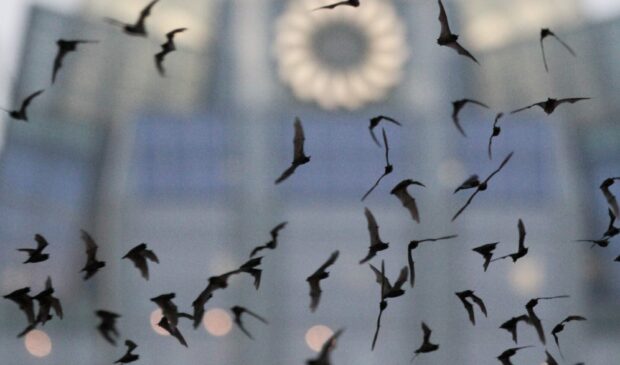Animal Advisory Commission considers banning glue traps in Austin
Wednesday, September 11, 2024 by
Hunter Simmons Bats are under attack by glue traps used in the city, advocates for Austin’s bats say.
“I would love to see glue traps banned from being sold and used in Austin,” says Austin Bat Refuge’s executive director, Dianne Odegard.
The Animal Advisory Commission discussed Austin’s use of glue traps as a form of pest control at its regular meeting on Sept. 6. Commissioner Paige Nilson invited Odegard to speak on the issue at the meeting.
“There is extreme cruelty involved in this form of pest control,” Odegard said.
Glue traps are often put out to catch one type of mammal or insect but have a broad range in the animals they affect, trapping insects, bats, birds, reptiles, rodents and even pets. No pesticides are used in the traps. Rather, animals die from dehydration, starvation, exhaustion, panic, stress and pain.
Glue traps can also have negative effects on humans. The U.S. Centers for Disease Control and Prevention advise against the use of glue traps because the fright they cause animals can induce them to urinate, which spreads bacteria and disease in the area where the trap is placed.
Volunteers at the Austin Bat Refuge, the only bat rehabilitation center in the city, work to protect and educate the public on urban wildlife issues. Their team is often brought bats that have been caught in glue traps. The shrieks and cries of these animals in distress were described with horror, some even attempting to “chew off their legs to escape.”
Bat rehabilitators implement a process of applying vegetable oil to get the animal free from the trap and then use dish soap to remove the oil.
Due to Austin’s geographic location, birds and bats migrate through the city almost year-round. According to the Texas Parks and Wildlife Department, the city is situated along the Central Flyway, one of the four major avifaunal migration routes that crisscross North America. An estimated 100,000 bats constantly linger within city limits throughout all four seasons. The Ann W. Richards Congress Avenue Bridge has become an iconic tourist attraction as home to the world’s largest urban bat colony. Austin Bat Refuge describe the bridge as “where the bat and human tectonic plates meet.”
Because of these factors, glue traps pose a uniquely detrimental threat to the biodiversity of the city.
Bat activists pushed for a ban on both the use of glue traps in city facilities and on the sale of such traps within city limits.
Commissioners unanimously agreed that glue traps are cruel. They will consider a resolution banning the traps at their next meeting, which will then move on to City Council for approval. Chair Ryan Clinton suggested starting a working group on the matter after city action is taken.
“Incrementalism is still a win,” said Commissioner Whitney Holt, who spearheaded this agenda item.
The Animal Advisory Commission is made up of citizen volunteers and holds no regulatory power. Its mission is to advise City Council and the Travis County Commissioners Court on animal welfare issues in the city.
Photo by Dan Pancamo, CC BY-SA 2.0, via Wikimedia Commons.
The Austin Monitor’s work is made possible by donations from the community. Though our reporting covers donors from time to time, we are careful to keep business and editorial efforts separate while maintaining transparency. A complete list of donors is available here, and our code of ethics is explained here.
You're a community leader
And we’re honored you look to us for serious, in-depth news. You know a strong community needs local and dedicated watchdog reporting. We’re here for you and that won’t change. Now will you take the powerful next step and support our nonprofit news organization?






